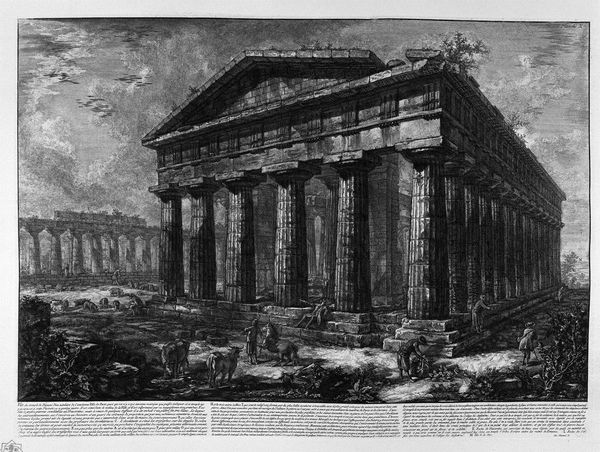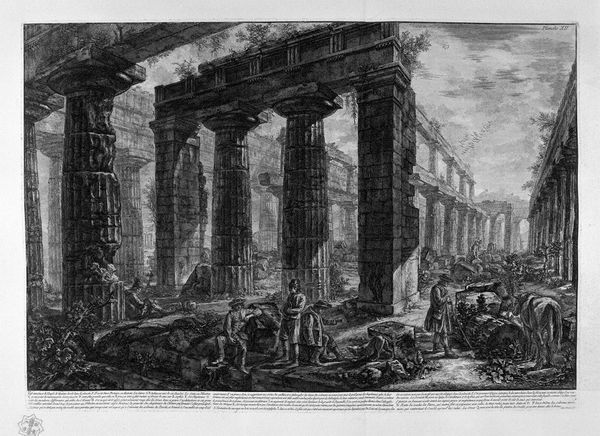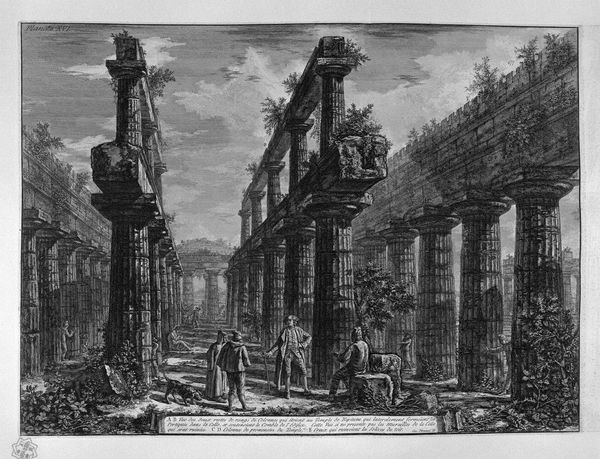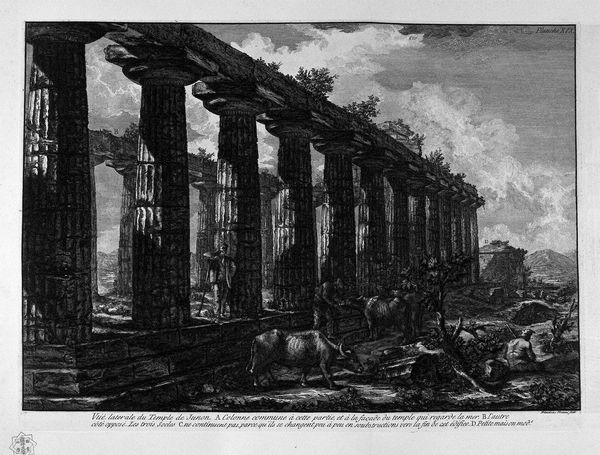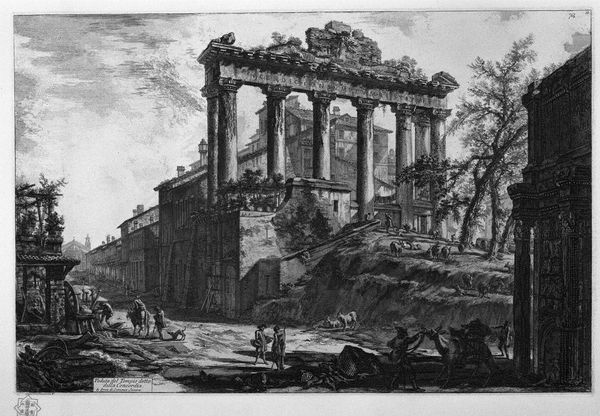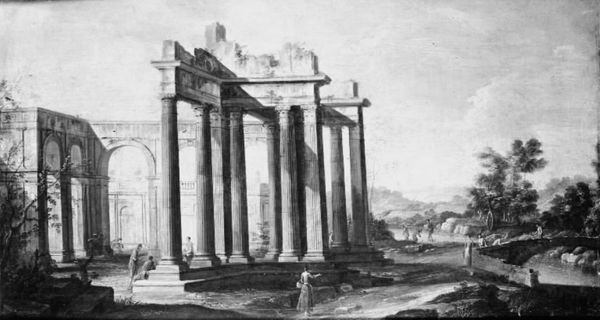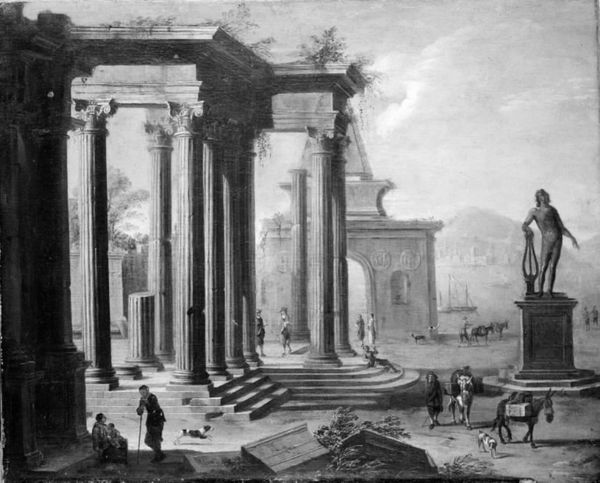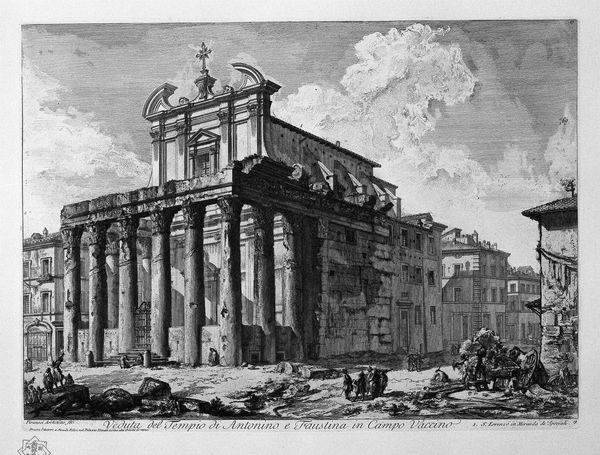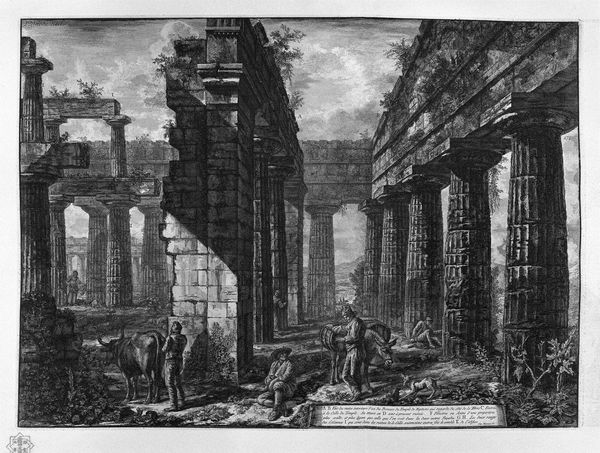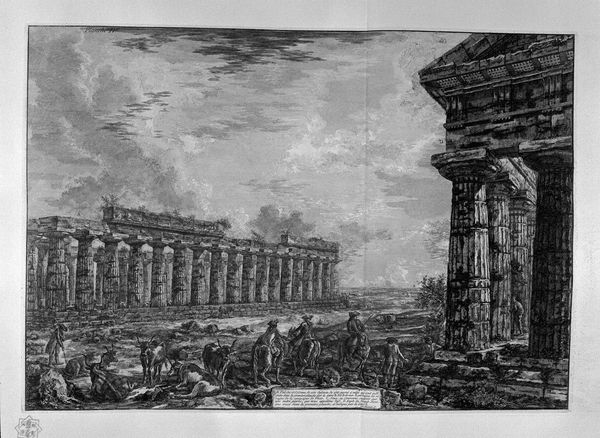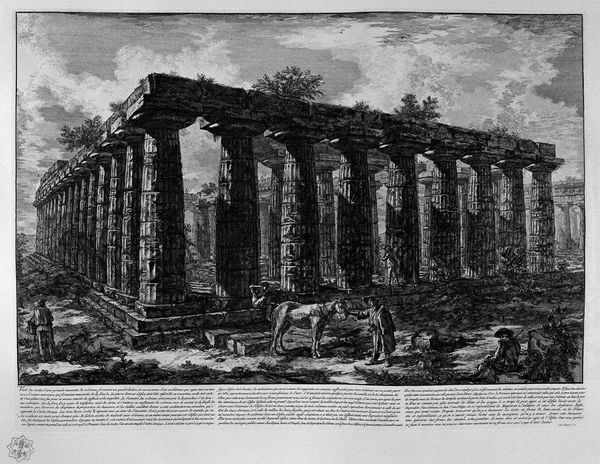
The Roman antiquities, t. 1, Plate XXXI. Temple of Antonius and Faustina. 1756
0:00
0:00
print, etching, engraving, architecture
# print
#
etching
#
romanesque
#
highly detailed
#
geometric
#
arch
#
carved
#
history-painting
#
engraving
#
architecture
#
building
Copyright: Public domain
Curator: This print is titled "The Roman antiquities, t. 1, Plate XXXI. Temple of Antonius and Faustina," made by Giovanni Battista Piranesi in 1756. The etching and engraving depict a view of Roman ruins. What catches your eye first? Editor: The stark contrast! It's such a powerful way to represent decay. You've got these imposing, fragmented structures battling against this delicately rendered sky. It evokes a profound sense of loss, almost as if civilization is surrendering to time itself. Curator: Piranesi masterfully plays with perspective, making the remnants feel monumental, their significance unyielding despite the evident damage. Look at the figures he’s included in the lower left—they’re dwarfed by the scale of these ruins. Editor: And who were Antonius and Faustina, anyway? These temples aren't just piles of rocks, they're loaded with ideology. Who were they meant to impress, what stories were being told? Often these spaces exclude certain demographics in ancient society. Curator: Antoninus Pius, a Roman Emperor, dedicated the temple to his deceased wife, Faustina, who was later deified. It served as a space for imperial cult worship. Over time, its symbolism has shifted with cultural and political tides. The images, the engravings, and of course, architecture like this carries that. Editor: That's fascinating! Thinking about how Piranesi renders this moment nearly 1700 years later speaks to the ever shifting nature of memorialization, doesn't it? Even this very image is influencing our reading. Who is the "us" who gets to engage with antiquity here and now? The composition is itself exclusionary: men surveying the area while another stands outside its perimeter with equipment for restoration. Curator: It speaks to a long European tradition of claiming a legacy from Roman history. I agree with you-- it speaks to who it leaves out, and that impacts how this space gets constructed, who the ruins matter to, whose power endures, even through ruin. Editor: Well, this image certainly challenges me to rethink what it means to inherit the past and grapple with whose stories get told – and who benefits in that telling. Curator: Indeed. Perhaps an image is like a fragment itself, hinting at the whole while reminding us of what has been irretrievably lost or purposefully hidden.
Comments
No comments
Be the first to comment and join the conversation on the ultimate creative platform.
